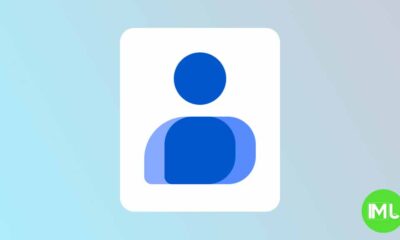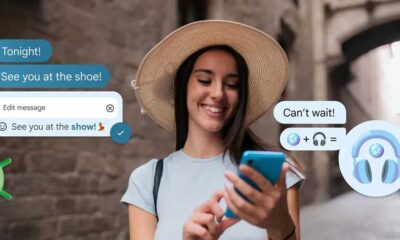Google releases open-source watermarking tool to detect AI-generated text

Google has made its watermarking tool, SynthID, available as an open-source technology to help detect AI-generated text. This move is part of Google’s broader efforts to promote responsible AI development and is now part of their Responsible Generative AI Toolkit. SynthID was initially developed to make it easier to identify content generated by large language models (LLMs).
How SynthID Works
SynthID works by embedding an invisible watermark into AI-generated text, images, audio, and video, making it detectable by software but invisible to humans. The watermark is integrated into the generation process without compromising the quality, accuracy, or creativity of the content.
When a large language model generates text, it predicts and selects the next most likely word or token based on probability scores. For instance, if the phrase “My favorite tropical fruits are __” is entered, the model might generate the words “mango,” “papaya,” or “lychee.” SynthID adjusts these probability scores slightly to create a watermark. These adjustments occur throughout the text, embedding a pattern that can later be identified as AI-generated.
Google claims SynthID works even with short text (as little as three sentences) and can still detect AI content even if it’s paraphrased or modified. However, the tool struggles with detecting very short text, text that’s been significantly rewritten, or content translated into other languages.
Why Watermarking is Important
Watermarking AI-generated content is becoming crucial in the current landscape, where AI models can be misused for malicious purposes such as spreading misinformation or creating inappropriate content. Governments are starting to take notice—California is exploring the idea of making watermarking mandatory, and China has already implemented regulations requiring it.
Although SynthID isn’t a perfect solution, it marks an important step in the development of tools to identify AI-generated content. Google notes that it’s not a “silver bullet” for solving all problems related to AI identification but says it’s a building block toward more reliable solutions.
Impact on Developers
By releasing SynthID as open-source software, Google hopes to empower other AI developers to incorporate similar watermarking technologies into their own models. This could help create a more responsible AI ecosystem by making it easier to track and identify AI-generated text across different platforms.
Pushmeet Kohli, Vice President of Research at Google DeepMind, shared with MIT Technology Review that developers using large language models will benefit from the open-source SynthID. It will allow them to detect whether their own models have produced the text, ensuring they contribute to responsible AI practices.
Conclusion
Google’s decision to open-source SynthID is a significant step in advancing AI transparency. While it’s not a complete solution for identifying AI-generated content, it provides developers with a tool to build more responsible AI systems. As more developers integrate SynthID or similar watermarking techniques, the technology will likely improve, helping to make AI-generated content more transparent and trustworthy.
In an AI-driven world, tools like SynthID will become increasingly vital for distinguishing between human-created and AI-generated content, supporting informed decision-making and protecting users from potential misuse of AI technology.
Google Meet gets a fresh new look with Material 3 design

Google Meet is getting a big update to its look, thanks to the new Material 3 design. This change brings a cleaner and more modern style to the video calling app, making it easier and more enjoyable to use.
With Material 3, Google Meet now has rounder buttons, softer colors, and better spacing between elements. The main controls, like the microphone, camera, and end call buttons, are now larger and easier to tap. The icons and text are also clearer, which helps users find what they need quickly during a call.
Another improvement is the new “expressive” color system. This feature lets the app’s colors match your device’s wallpaper or theme, giving each user a unique and personalized experience. The changes also make Google Meet more accessible, as the new design is easier to read and use for everyone, including people with vision difficulties.
These updates are rolling out to both web and mobile versions of Google Meet. Google says the new look will help people feel more comfortable and focused during their meetings. Overall, the Material 3 update makes Google Meet not only look better but also work better for all its users.
Android
Easy ways to change Android Auto’s look with light and dark themes

Android Auto is a helpful tool that lets you use your phone’s apps safely while driving. It connects your phone to your car’s screen, making it easier to use maps, music, and calls. One of the features many people like is the ability to change how Android Auto looks by switching between light and dark themes.
How to switch between light and dark themes
Android Auto offers two main themes: light and dark. The light theme uses brighter colors, which can make the screen easier to see during the day. The dark theme uses darker colors, which can be more comfortable for your eyes at night or in low light.
To change the theme, follow these steps:
- Open the Android Auto app on your phone.
- Go to the settings menu.
- Find the “Theme” option.
- Choose between “Light,” “Dark,” or “Set by car” (this lets your car decide the theme based on the time of day or your car’s settings).
Why themes matter
Using the right theme can make driving safer and more comfortable. The light theme is good for bright days, while the dark theme helps reduce glare at night. Having these options means you can pick what works best for you, making Android Auto easier to use in any condition.
In short, Android Auto’s theme options are simple to use and help you drive more safely by making the screen easy to see, no matter the time of day.
Google Drive and Files by Google get fresh updates for easier use

Google is rolling out some helpful updates to two of its popular apps: Google Drive and Files by Google. These changes are designed to make managing your files and watching videos much smoother.
First, Google Drive is getting a new video player. Now, when you upload a video to Drive and open it, you’ll notice a fresh look that matches Google’s latest design style. The controls, like play and pause, are easier to use and look cleaner. This update makes it simpler to watch videos directly in Drive without needing to download them first.
Meanwhile, the Files by Google app is also getting a makeover. The app is adopting Google’s Material 3 design, which means it looks brighter and more modern. The buttons and menus are easier to see and use, making it simpler to find, move, and organize your files. There are also new color options and improved icons, so everything feels more user-friendly.
Both updates show Google’s commitment to making its apps more helpful and enjoyable to use. Whether you’re watching videos in Drive or sorting files on your phone, these changes aim to save you time and make things less complicated. If you use these apps, keep an eye out for these new features—they should arrive soon!
-

 Apps1 year ago
Apps1 year agoGboard Proofread feature will support selected text
-

 News1 year ago
News1 year agoSamsung USA crafting One UI 6.1.1
-

 Apps12 months ago
Apps12 months agoGoogle Contacts app testing new Besties Widget
-

 AI12 months ago
AI12 months agoGoogle Pixel 9 Pro may come with a complimentary one-year Gemini Advanced subscription
-

 News1 year ago
News1 year agoBreaking: Samsung Galaxy S22 may get Galaxy AI features
-

 Apps12 months ago
Apps12 months agoGoogle working on a new video editing feature for its Photo app
-

 Apps12 months ago
Apps12 months agoGoogle Maps lets you report traffic jams and accidents on Apple CarPlay, but not on Android Auto
-

 Apps12 months ago
Apps12 months agoGoogle Messages app will transform MMS chats into RCS










